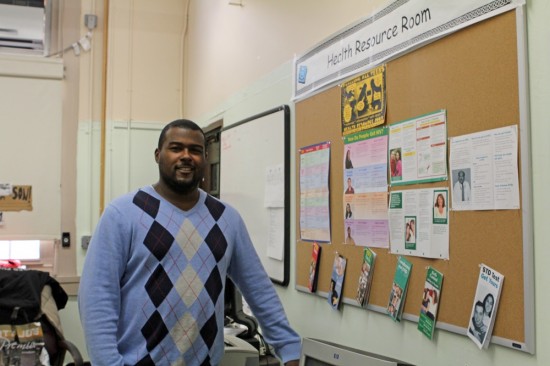
Mott Haven’s rate is the highest in city, study finds
As the city has started to introduce a new sex education program for middle and high schools, Mott Haven has emerged as the neighborhood with the highest teen pregnancy rate in the five boroughs.
Even though the neighborhood rate has been going down for years, it hasn’t shrunk as fast as the rest of the city, according to a new report.
“The statistics are scary,” said Bienvenido Hernandez, dean at the Mott Haven Village Prep High School on St. Ann’s Avenue, adding there were seven or eight pregnant teens at the school last year. “We try everything we can to bring these numbers down.”
About one out of every seven women in Mott Haven who gave birth between 2007 and 2009 was a teenager, according to the study, released in November by New York University’s Silver School of Social Work. That was the highest rate in the city. Morrisania and Hunts Point both ranked fourth.
“They want somebody to love them,” said Deandra Plummer, 15, participant in the Changing the Odds program at the Morris Heights Health Center, where teens learn about community issues and sexual health. Right now, there are no program participants who are pregnant.
Dr. Vincent Guilamo-Ramos, who runs the NYU doctoral program and presented the new report at the Morris Heights Health Center after its release, said local young people have long needed a new health curriculum.
“Mott Haven needs an evidence-based and science-informed health education program,” he said.
In his fifth-floor office at Village Prep, Hernandez offers students information on sex, and provides condoms to those whose parents have not pulled them out of the program. He says the majority of kids who come to see him simply want to talk.
“Most of them don’t come to actually get condoms,” Hernandez said.
But family pressures often keep young people from seeking his advice. Seventeen names were on the opt-out list that hung next to Hernandez’ desk, out of the 62 students in the program.
On one of his office walls, Hernandez pinned a poster that informs visitors about sexually transmitted diseases. He said many parents are uninformed about the diseases their kids can get from unprotected sex.
About 70 percent of Hernandez’ students are from conservative, often Catholic families. The parents are hesitant to talk to their kids about sexual safety.
“It’s a taboo for certain folks,” said Hernandez.
Instead, parents rely on the media, he said.
But the media doesn’t do a good job either. In reality-TV-shows such as “Teen Mom”, teenage girls become protagonists and are shown in their daily lives with their babies, said Hernandez.
Almost twice as many teenage girls in the Bronx give birth as Manhattan or Queens girls, according to the NYU report. Brooklyn has the city’s second highest rate with about 30 percent, Staten Island the lowest with about 20 percent, according to the city’s Department of Health.
About one in ten girls between 15 and 19 in the Bronx is pregnant, down from 1.5 out of ten a decade ago.
Still, the rate is unacceptably high, said Dr. Guilamo-Ramos.
The NYU report named a lack of access to health care and mental health services in the Bronx as a key problem.
About 300 students are taking part in the Changing the Odds program, which has been implemented at 12 Bronx schools this year, according to program director Estelle Raboni. Raboni says building self-esteem is crucial for Bronx teenagers.
“Young people in the Bronx unfortunately see themselves not able to affect change,” she said.
Francine J. Rojas, a social worker at Village Prep, said longer hours during the school day give students less opportunity to engage in sexual activity. She said teens often use the window of time between leaving school and their parents’ return home from work to get sexually active.
For that reason, Rojas says, after-school programs could be a valuable support for teens.
School attendance is also a key element in lowering teenage pregnancy rates.
“A lot of girls are just cutting school and hanging out with their boyfriends,” Rojas said.

[…] Mott Haven Herald took a look at what’s being done to address the problem in the borough ranked the highest in […]